 FULL
TEXT AND ILLUSTRATION
FULL
TEXT AND ILLUSTRATION
 NEAR-Shoemaker Web Site
NEAR-Shoemaker Web Site
NEAR'S NEW VIEW OF
EROS:
IMPACT PROCESSES AND SPACE WEATHERING
Meteoritical Society, Chicago, August 28, 2000
Clark R. Chapman
Southwest Research Institute, Boulder CO
and The NEAR MSI/NIS Team
Eros has been found to resemble Ida in almost all respects (e.g. saturated cratering, S(IV) spectral type, bulk density, and probable ordinary chondritic composition) except for one: it lacks the prominent color differences seen on Galileo's multispectral images of Ida. The latter have been ascribed to recent, fresh units (impact penetration to bedrock and irregular distribution of fresh ejecta around Ida) which contrast with the redder coloration of most of Ida's surface, explained by an as-yet-unidentified "space weathering" process that reddens Ida's surface with time. Eros exhibits the same reddened coloration as Ida, presumably due to space-weathering inasmuch as NEAR's X-ray compositional measurements indicate that Eros has an L- or LL-chondrite-like composition which should not appear to be so red. Here we attribute the lack of any fresh units having ordinary chondrite-like colors to a plausible 50 Myr hiatus in cratering of Eros following its dynamical removal from the impact environment of the main asteroid belt, during which space weathering has reached maturity everywhere on the body. Other possible implications of such a cratering hiatus are also discussed, including implications for the origin of the numerous boulders on Eros and the possible role of usually minor geological processes in shaping the geomorphology of Eros.
FIND EROS (and NEAR-Shoemaker) IN THE SKY!
(See my article in the Sept./Oct. 1997 issue of The Planetary Report, pp. 14-15, "On to Eros! How You can get Personally Involved with the NEAR Mission")
Star Charts for Eros: For the Current Month
Example of Star Chart for February 2000:
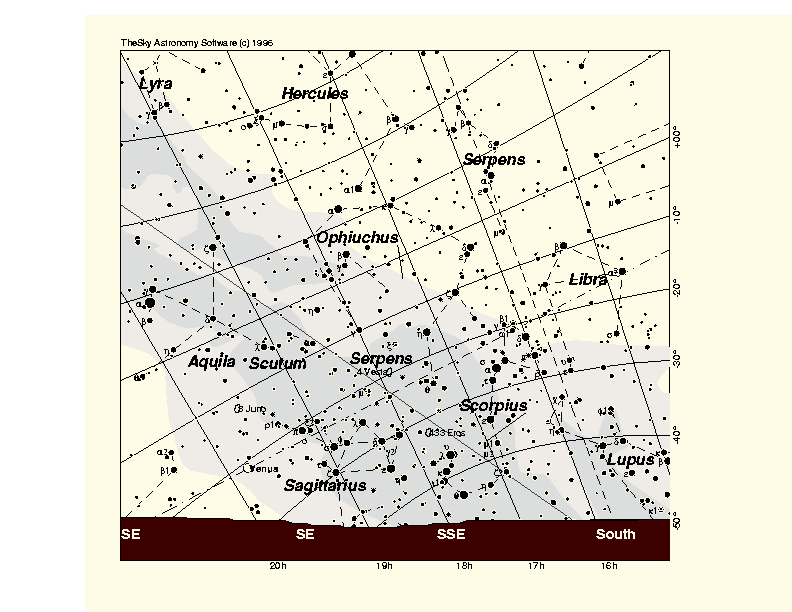
This chart shows the position of Eros (and NEAR!) in the sky during the middle of February 2000, about an hour before sunrise (when the sky is beginning to brighten), as seen from a mid-northerly latitude. At this time, Eros will be low (about 13 degrees up) and very faint (magnitude 14.2, requiring a sizeable backyard telescope). Eros is located between two famous constellations of the zodiac, Scorpius and Sagittarius, low in the southeastern sky in the middle of the Milky Way. The chart also shows the positions of two other, much brighter, asteroids near Sagittarius (Juno and Vesta) as well as brilliant Venus.
Crater Frequencies for Eros
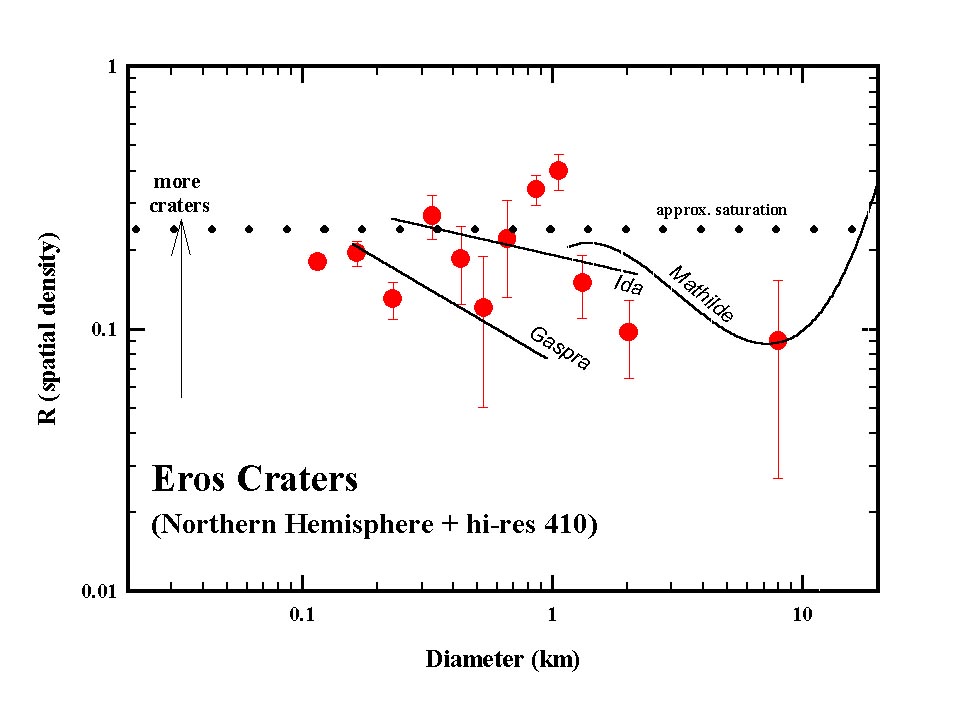
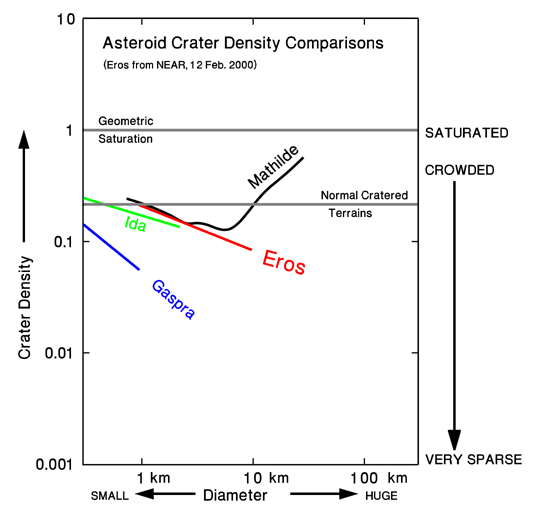
Impact crater populations on asteroids visited by spacecraft are compared on these plots. The higher locations on this plot indicate more craters; sparse cratering is lower on the graph. Craters can never be as numerous as indicated by the "geometric saturation" line, where they would lie cheek-by-jowl, totally crowding the surface. An important difference between asteroids is whether or not large craters dominate coverage of the surface compared with small craters (indicated by a line sloping to the upper right) or, instead, if smaller craters dominate the surface (a line sloping to the upper left).
As shown by these plots, Eros has similar numbers of smaller craters as Mathilde and Ida (observed by NEAR and Galileo, respectively). But Eros lacks the numerous huge craters present on Mathilde. Eros shares with Ida and Mathilde a trait for which Gaspra, so far, remains the exception: their larger numbers of craters indicate that they are rather old compared with the more sparsely cratered Gaspra.
The top plot, prepared in late March, shows counts of a typical cratered region (for craters several hundred meters in size) plus all northern-hemisphere craters of roughly 1 km diameter and larger. The lower plot is based on earlier data from approach images of Eros. More detailed discussion of the crater counts that went into the latter summary plot is provided below.
The next day (DOY 041), even higher resolution images were available. 42 craters are analyzed and shown in solid squares. Counts at the smallest sizes of both sets of data may be incomplete. It is beginning to look as though there is a fairly steep "slope" to the power-law-like size-frequency relationship at crater sizes smaller than a couple km. I have analyzed these data from deblurred images using computer routines developed by Peter Thomas and Jonathan Joseph, from Cornell University.
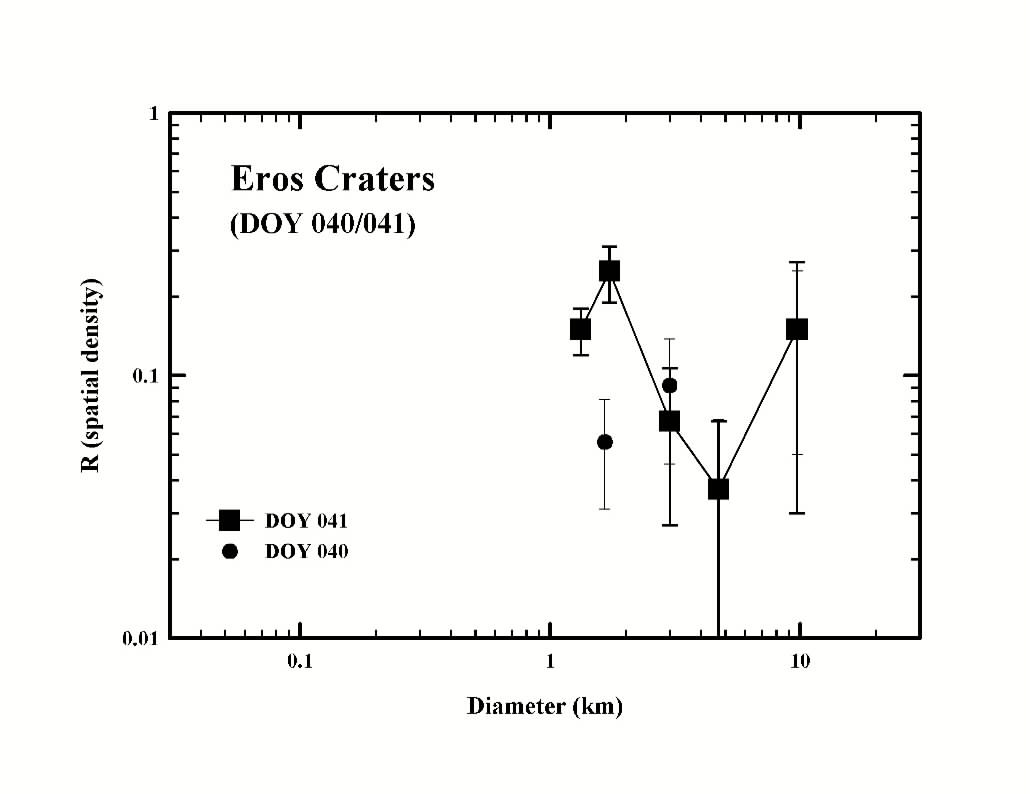
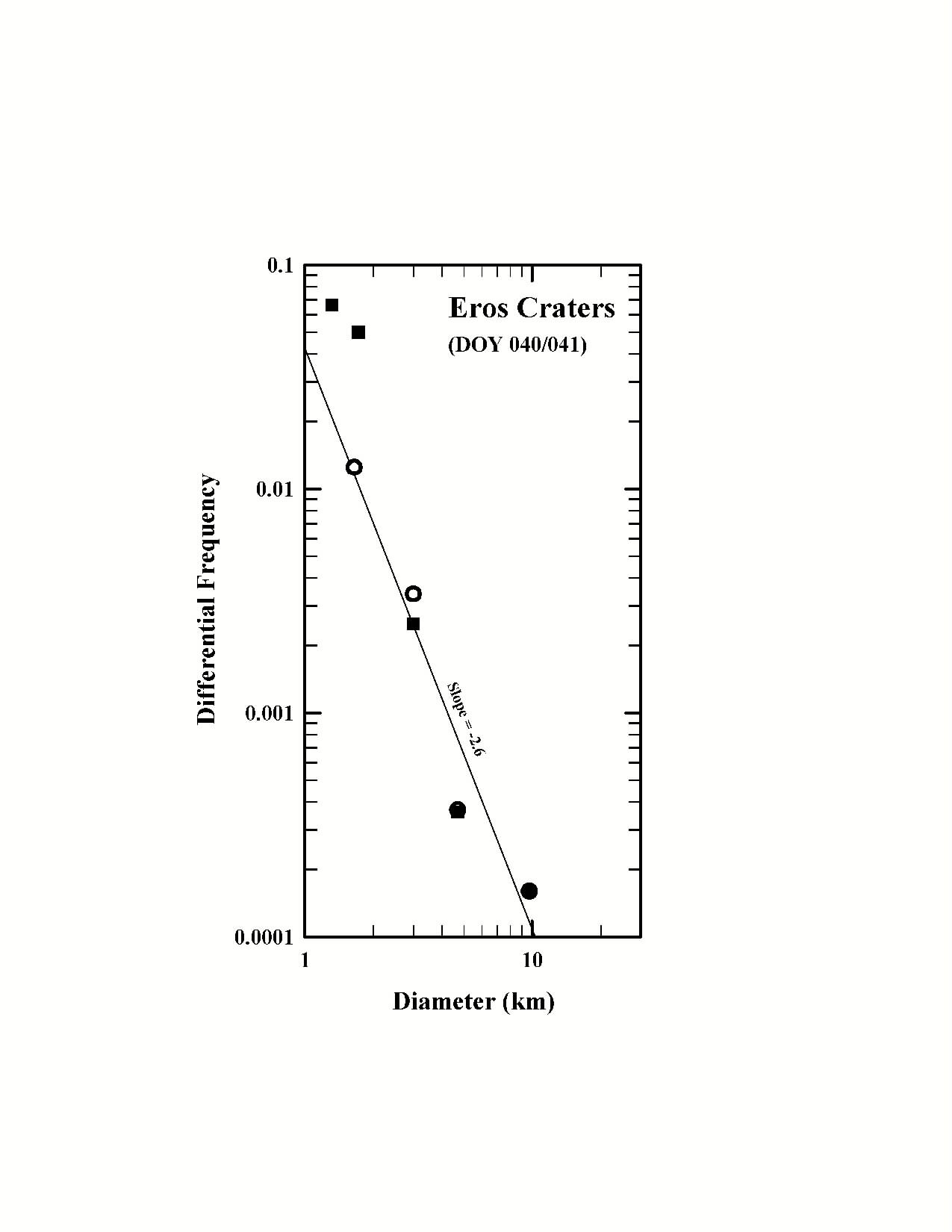
NEAR's Encounter with Mathilde
On June 27, 1997, the NEAR spacecraft flew within less than 1200 km of the nominally 60 km diameter, black, extremely-slowly spinning main-belt asteroid 253 Mathilde. The two chief scientific measurements obtained were a series of several hundred images taken through several filters with the multi-spectral imager and a radio science determination of the asteroid's mass.
Clark Chapman and Bill Merline, of SwRI, spent encounter week at the Applied Physics Lab (APL) of Johns Hopkins University in Laurel, Maryland, planning for the encounter and reducing the data obtained over the weekend following the encounter, in preparation for the June 30th press conference. On Encounter Day, Chapman participated in a panel discussing the encounter and early results that was widely reported by the wire services.
The first results were (1) that Mathilde's shape is oddly carved by giant craters about equal in diameter to the asteroid's radius and (2) that the mass of Mathilde is only about 1/3rd that expected for an object of density 2.6 g/cc with a radius of 30 km. Although we now think Mathilde is a little smaller than previously estimated, its density is still surprisingly low. It can be explained by a combination of inherently low density carbonaceous material and a rubblized internal structure with voids, perhaps augmented by the gouges removed from the asteroid by the huge craters.
For more information about the Mathilde encounter, visit the NEAR-Shoemaker Home Page or return here for updated information.
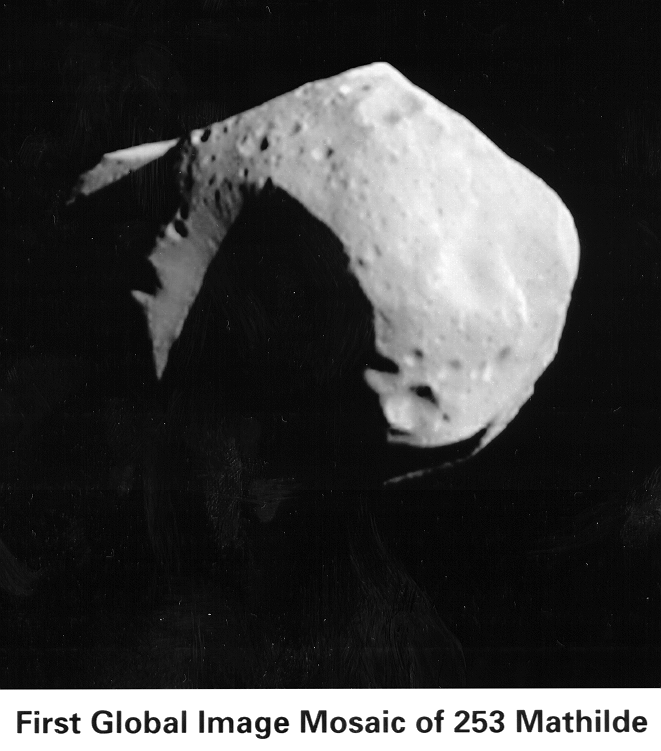
 Available Abstracts, Preprints, Articles.
Available Abstracts, Preprints, Articles.
 Clark
R. Chapman's Publications.
Clark
R. Chapman's Publications.
 Home Page
Home Page